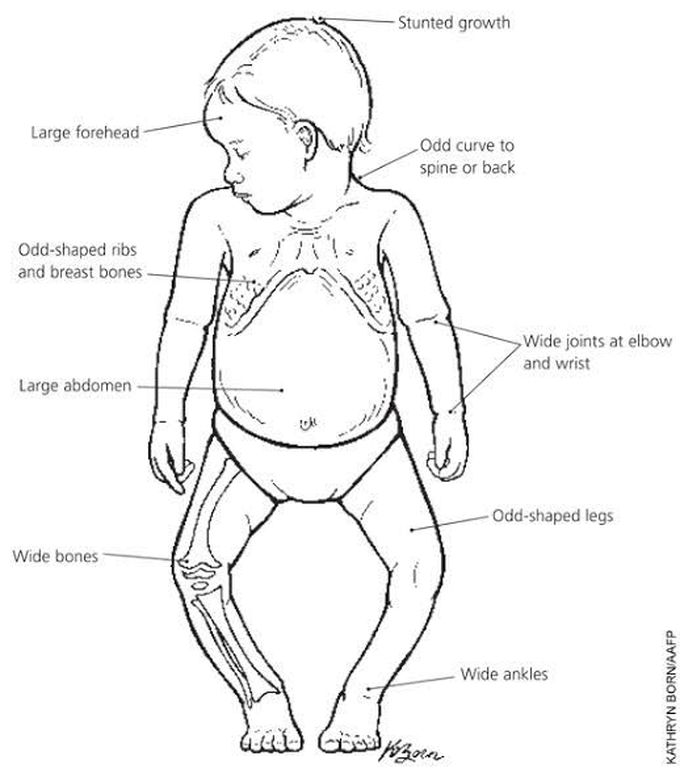


Sign and symptoms of rickets
OVERVIEW What is rickets? Rickets is a childhood disease where your child’s bones are too soft, causing their bones to warp, bend and break more easily. Rickets is different from osteomalacia, which is a similar condition seen in adults. The difference between the two is that rickets happens only in children because their bones are still growing, which causes the classic symptom of bowed or bent bones. Adults’ bones have already finished growing and they don’t have this symptom (unless they had untreated rickets as a child). Cleveland Clinic is a non-profit academic medical center. Advertising on our site helps support our mission. We do not endorse non-Cleveland Clinic products or services. Policy SYMPTOMS AND CAUSES What are the signs and symptoms of rickets? Bowing of leg bones. A widening of knees (in children who can walk) or wrists (in infants who can crawl). Bone pain. Swelling of the ends of ribs, known as rachitic rosary (pronounced “ra-kit-ic”) because the ends of the ribs look like rosary beads under the skin. Pigeon chest (where the breastbone presses outward or upward). Growth delays. Unusual curving of the spine or shape of the skull. Teeth problems, such as cavities. Seizures (in severe cases where calcium levels are critically low).
What is Rheumatoid Arthritis? | Johns Hopkins RheumatologyAnkylosing Spondylitis | HLA-B27, Pathophysiology, Signs & Symptoms, Diagnosis, TreatmentWhat is scoliosis?Osteosarcoma - Pathology, Symptoms, Diagnosis, Treatment

